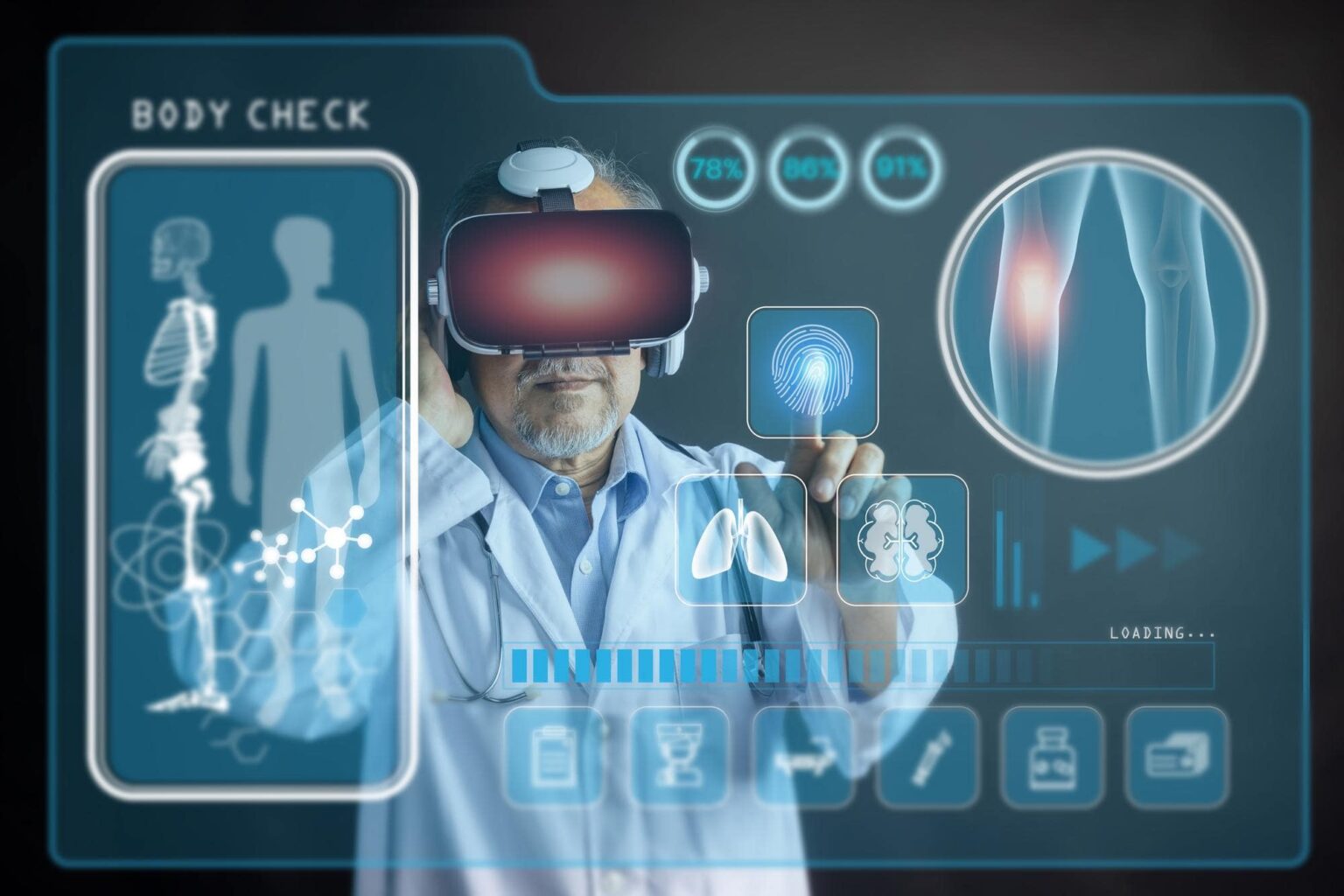Augmented reality (AR) technology is revolutionizing medical education by enhancing training methods and anatomy visualization. AR combines virtual elements with the real-world environment, providing a unique and immersive learning experience for medical students and professionals. Here are some key ways AR is transforming medical education:
- Anatomy Visualization: AR enables medical students to visualize and interact with 3D anatomical models overlaid on real-world objects. By using AR headsets or mobile devices, students can explore the human body in detail, identify structures, and understand spatial relationships. This enhances their understanding of complex anatomical structures, improving knowledge retention and spatial reasoning skills.
- Surgical Training: AR technology offers realistic simulations for surgical training. Surgeons can wear AR headsets that overlay virtual surgical instruments, patient data, and real-time guidance onto the surgical field. This allows trainees to practice surgical procedures, improve their technical skills, and familiarize themselves with specific surgical scenarios before operating on actual patients.
- Procedural Guidance: AR can provide step-by-step guidance and visual cues during medical procedures. By overlaying instructional information onto the real-world view, AR assists medical professionals in performing complex procedures with precision. This real-time guidance enhances safety, reduces errors, and shortens procedural times.
- Medical Imaging Interpretation: AR can enhance the interpretation of medical imaging, such as X-rays, MRIs, and CT scans. By overlaying imaging data onto the patient or a physical model, radiologists and other healthcare professionals can visualize and analyze the images in a more intuitive and interactive manner. AR can aid in identifying abnormalities, planning interventions, and improving diagnostic accuracy.
- Remote Collaboration and Consultation: AR technology enables remote collaboration and consultation among medical professionals. By sharing AR-enhanced views of patients, physicians can collaborate, discuss cases, and provide guidance from different locations. This enhances interdisciplinary collaboration, facilitates knowledge exchange, and improves patient care, particularly in remote or underserved areas.
- Patient Education: AR applications can be used to educate patients about their medical conditions and treatment options. By visualizing anatomical structures, disease processes, and treatment modalities, AR enhances patient understanding and engagement. This empowers patients to make informed decisions about their healthcare and improves compliance with treatment plans.
- Team Training and Communication: AR fosters team-based training and communication among healthcare professionals. It allows multiple users to see and interact with the same augmented content simultaneously. This is particularly valuable in emergency scenarios, where teams can train collaboratively, practice critical decision-making, and coordinate actions in a realistic simulated environment.
AR technology in medical education holds great promise, but it is important to ensure proper validation, accuracy, and integration into the curriculum. Balancing the use of AR with traditional teaching methods and hands-on experiences is essential to provide a comprehensive and well-rounded medical education.



